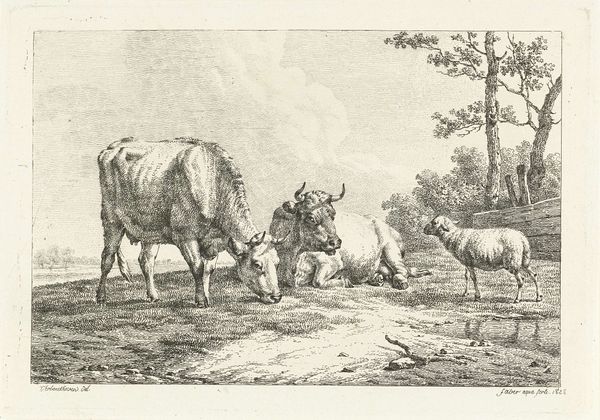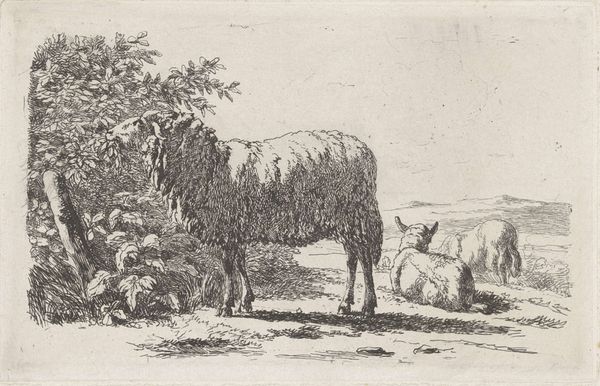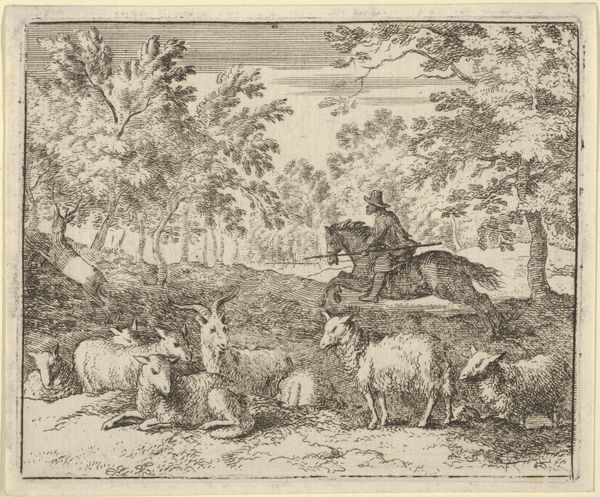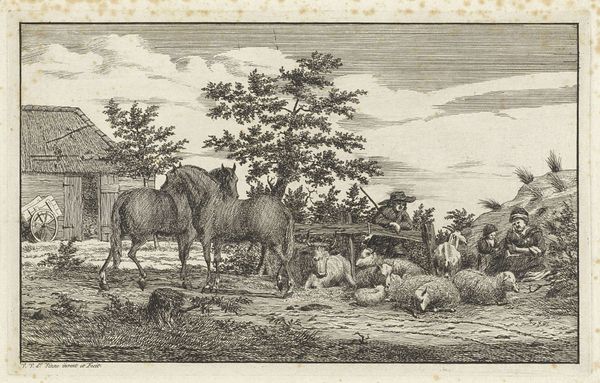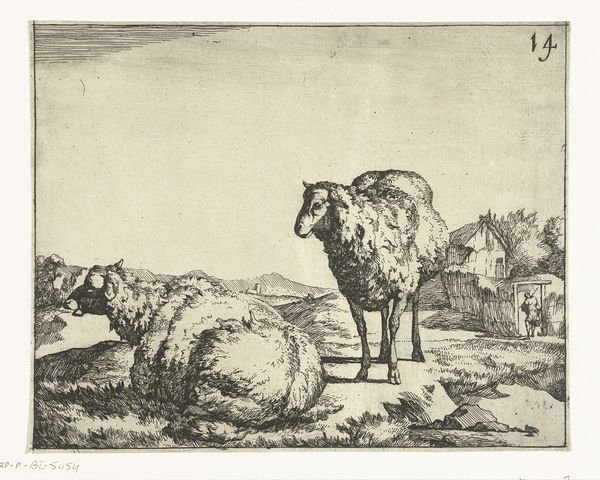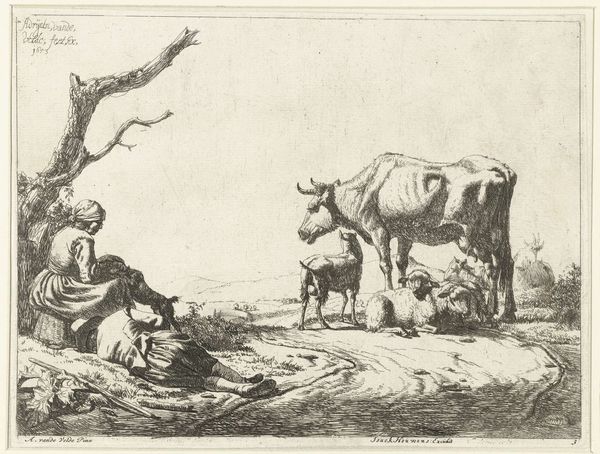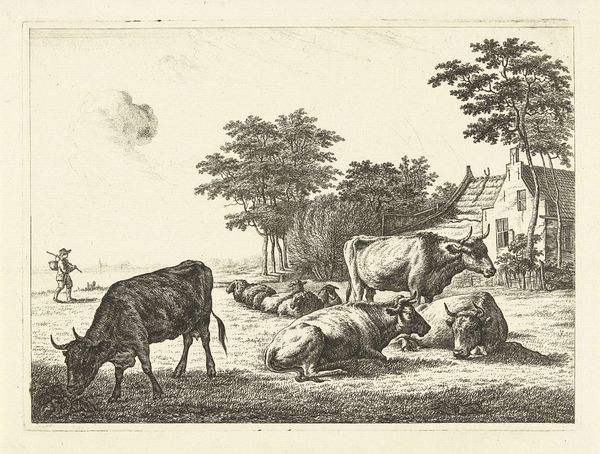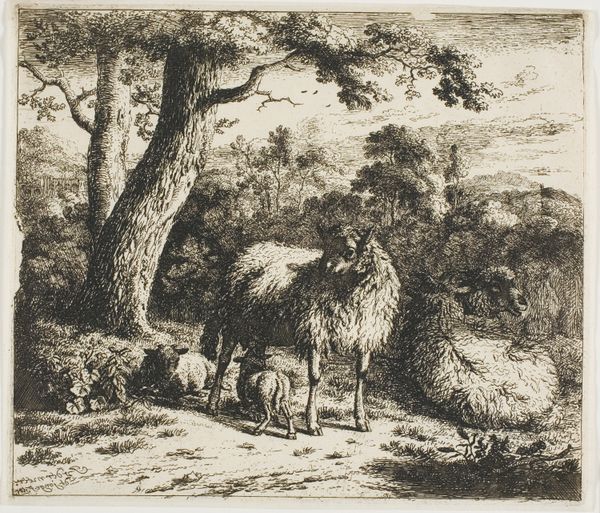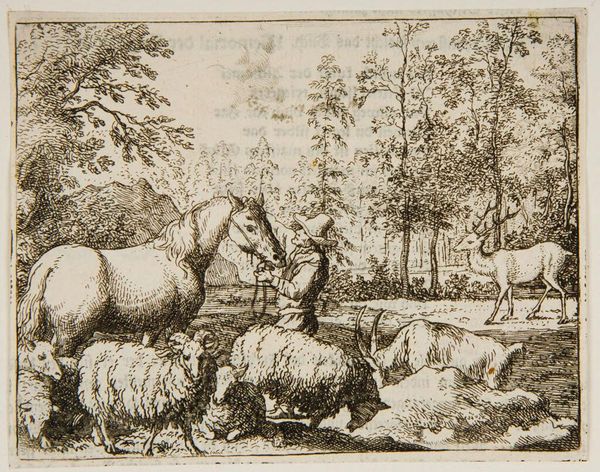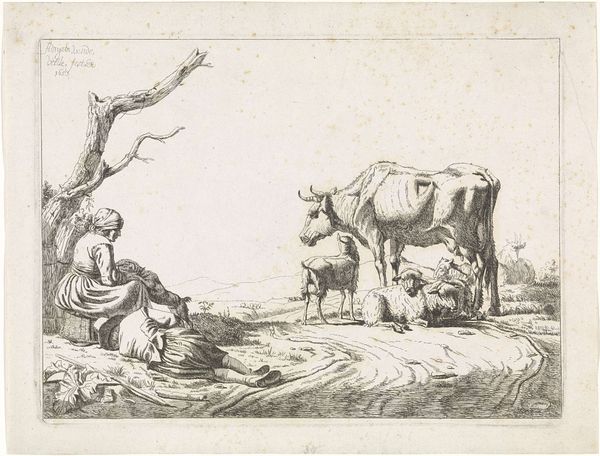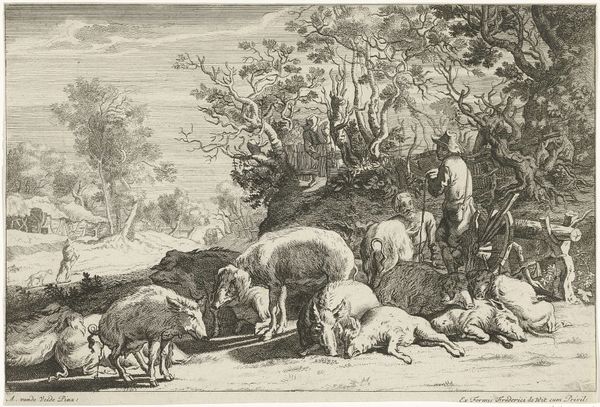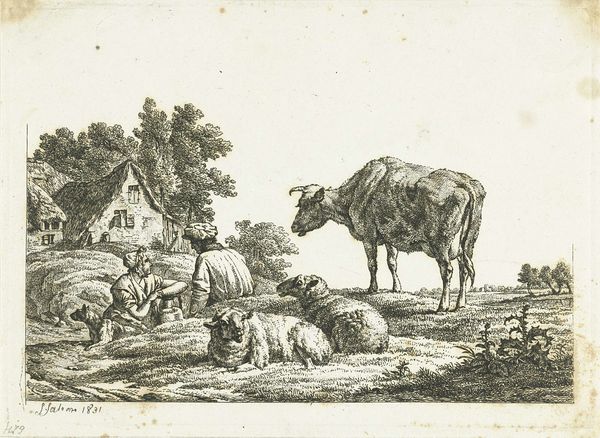
drawing, etching, engraving
#
drawing
#
animal
#
pen sketch
#
etching
#
pencil sketch
#
landscape
#
engraving
#
realism
Dimensions: height 153 mm, width 179 mm
Copyright: Rijks Museum: Open Domain
Editor: Here we have Anthony Oberman’s “Sheep near a Woven Fence," created sometime between 1796 and 1845. It's a detailed drawing; the texture is so rich for a black-and-white piece. I find it incredibly peaceful, almost like a snapshot of rural life. What pulls you into this particular pastoral scene? Curator: Ah, Oberman. He sees the soul in the mundane, doesn't he? For me, it's that fence. It speaks volumes about humanity’s constant reshaping of nature. And the sheep – are they truly contained, or are they part of this carefully curated vista? Is it a comment on ownership, perhaps? Editor: That's a cool perspective – the fence as a kind of… suggestion of ownership. I was just seeing it as, you know, a fence. So, you think Oberman might be critiquing something there? Curator: Critique might be too strong a word. More like… quietly observing. Look how the tree bends, almost mirroring the shape of the sheep. It's an echo, a reflection of how we see ourselves in nature. Have you ever felt utterly at one with your surroundings, only to realize you’re still separate, still observing? Editor: I think so. Like being in a forest, but knowing you're still a visitor. Curator: Precisely! And Oberman captures that fleeting feeling beautifully, doesn’t he? That sense of belonging mixed with the awareness of distance. Maybe that fence is as much about keeping the world out as it is about keeping the sheep in. Editor: I love that idea of the fence protecting the sheep. It really adds another layer to what I initially saw as a simple landscape. Thanks for sharing your insights! Curator: My pleasure! Sometimes, it’s the simplest images that hold the most profound truths, isn’t it? Art inviting us to observe, and be part of a delicate, interconnected world.
Comments
No comments
Be the first to comment and join the conversation on the ultimate creative platform.

